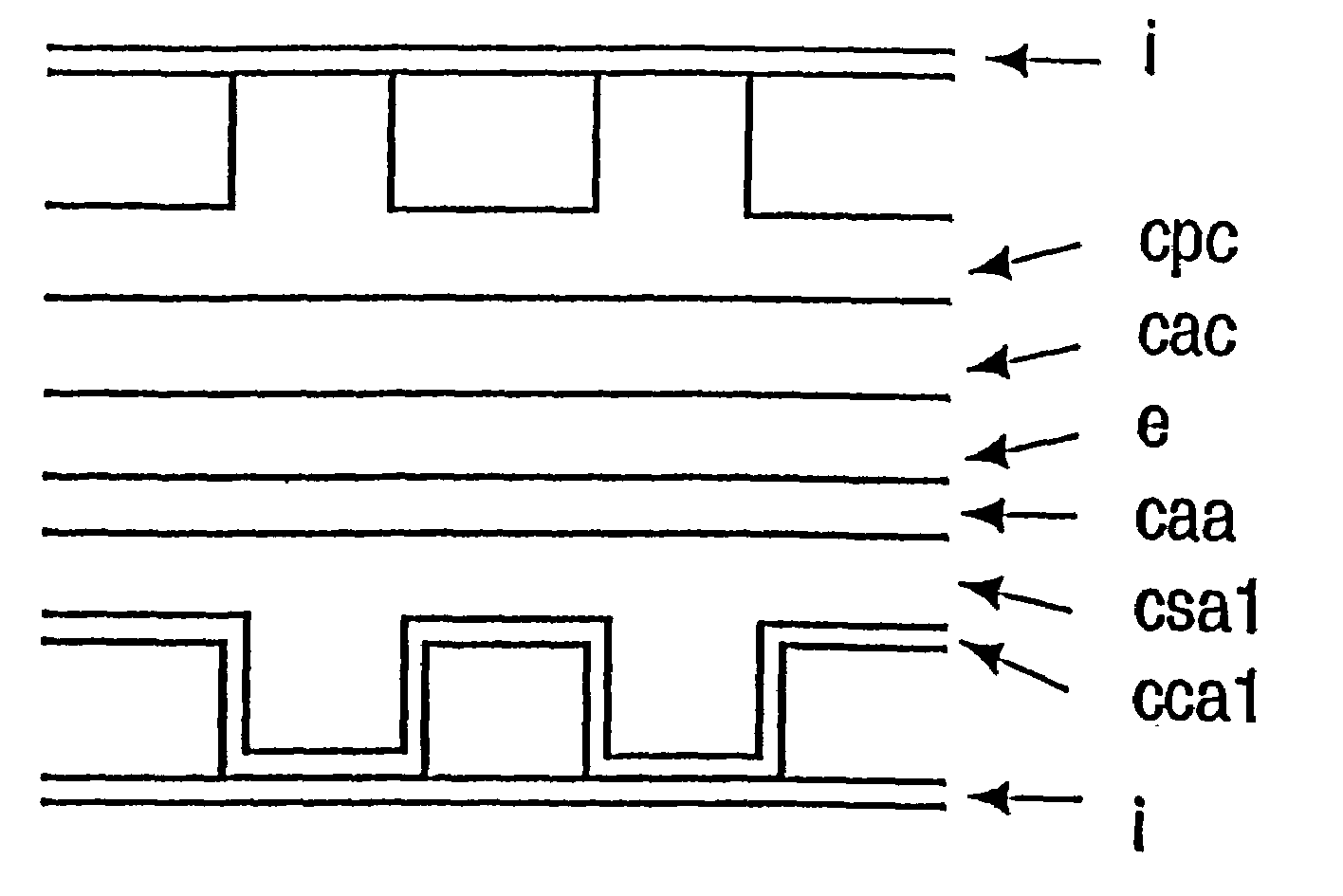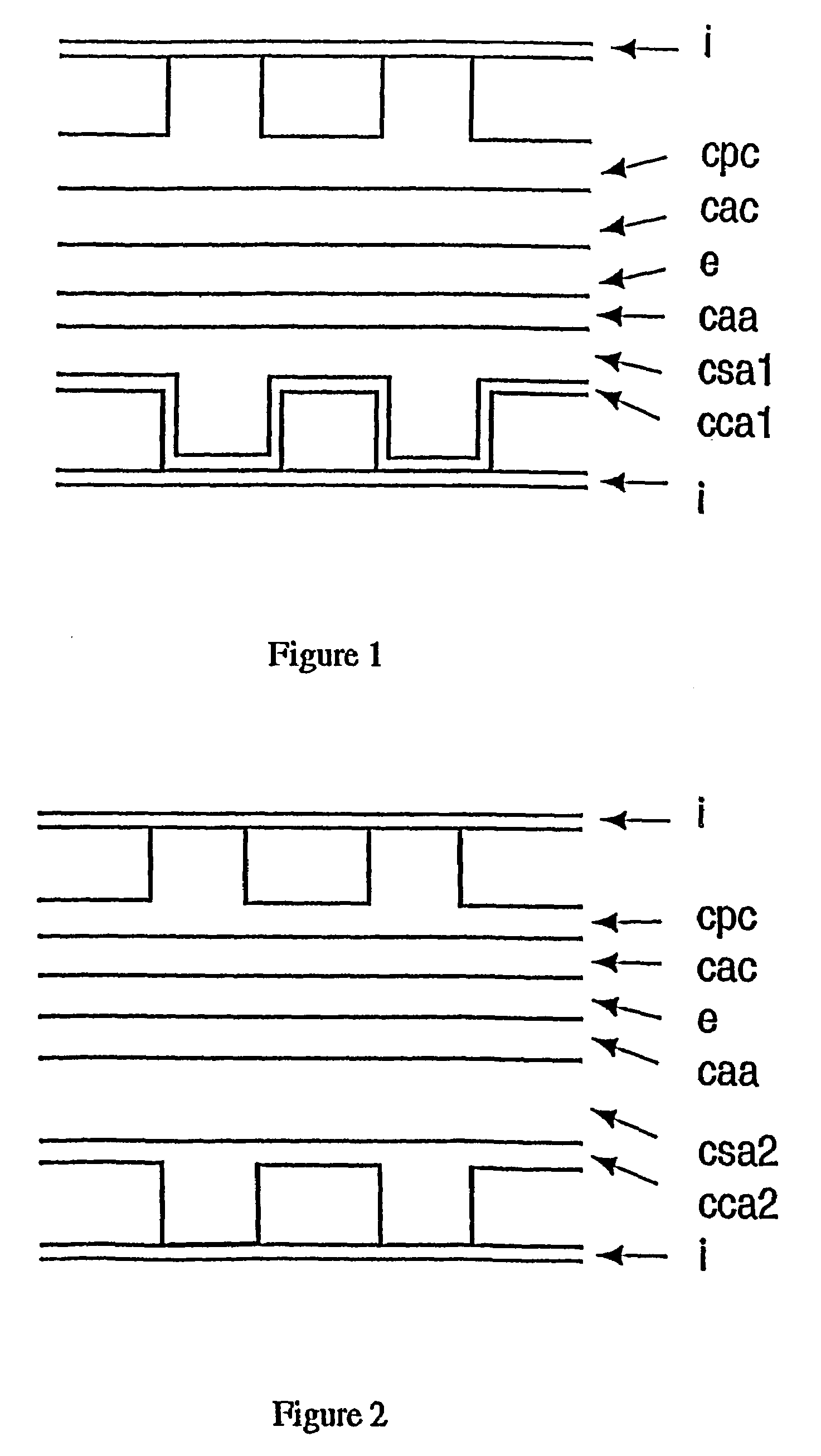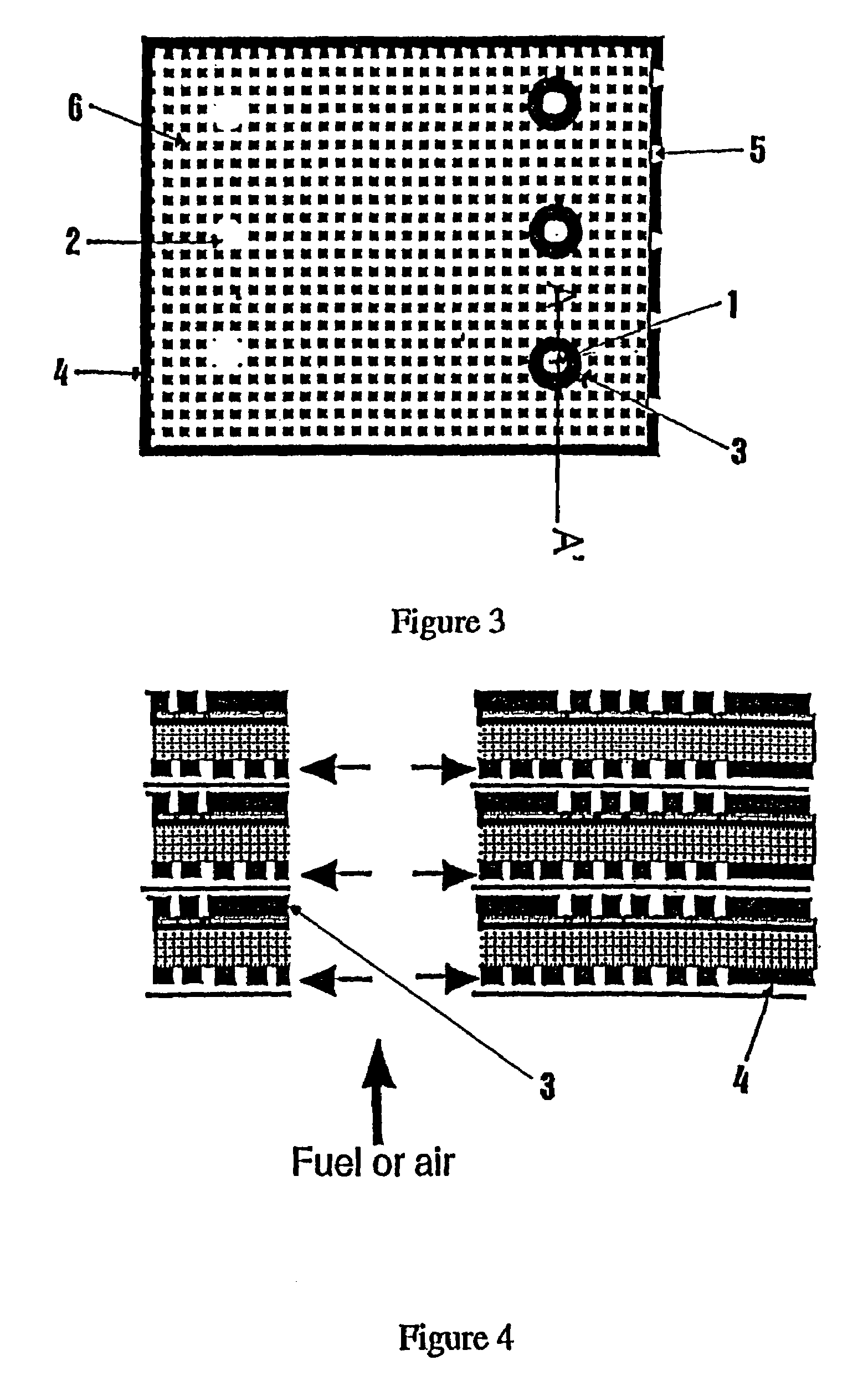Solid oxide fuel cell positive electrode-electrolyte-negative electrode
a technology of solid oxide fuel cells and positive electrodes, applied in the direction of fuel cells, fuel cell auxilaries, electrical equipment, etc., can solve the problems of difficult to meet the requirements of the application of the material, the interconnection plate is difficult to produce, and the cost of the interconnection plate is an obstacle to the profitability of the electrical energy produced by this type of device, etc., to improve the catalytic power and thermal expansion coefficient and conductivity of the anode layer, improve the tolerance of the so
- Summary
- Abstract
- Description
- Claims
- Application Information
AI Technical Summary
Benefits of technology
Problems solved by technology
Method used
Image
Examples
example 1
Production of a Mold for Gas Channels
[0100]In a first step, a “master” mold is produced which represents as positive the gas distribution channels. This master mold may be produced by micromachining a metal part, for example by means of electroerosion. It may also be produced by a stereolithography process or by a UV LIGA process, these processes being known in the prior art.
[0101]In a second step, a liquid rubber (RTV-ME 622, Wacker Silicone) is cast into the master mold. Following polymerization of the rubber, the latter is removed from the master mold. A flexible, negative mold for the gas distribution channels is thus obtained.
example 2
Production of a Structured Anode Collector Layer, by Polymerization
[0102]The layer is formed using zirconia particles (8 YSZ) and nickel oxide particles (60 to 100% with respect to the weight of the zirconia), having a diameter of between 0.2 and 1.5 μm.
[0103]The ceramic powders which are intended to form the anode support layer are dispersed in water with the aid of a polyelectrolyte dispersant (Duramax D3005, Rohm and Haas Company). A difunctional acrylate monomer (SR 610, Sartomer, USA) is added to the dispersion, in a proportion of 8 to 15% by weight with respect to the ceramic powders. Just before the dispersion is placed in the mold, a polymerization reaction initiator is added, for example ammonium persulfate and tetramethylenediamine, each in an amount of 0.5% by weight with respect to the weight of the acrylate monomer. The dispersion is placed in the rubber mold, degassed, and the mold is pressed against a smooth anode support layer which has been obtained beforehand by st...
example 3
Production of a Gas Distribution Structure (Variant)
[0104]The process is the same as in Example 2. The polymerization initiator is diethylenetriamine, in an amount of 5% by weight with respect to the monomer.
PUM
 Login to View More
Login to View More Abstract
Description
Claims
Application Information
 Login to View More
Login to View More - R&D
- Intellectual Property
- Life Sciences
- Materials
- Tech Scout
- Unparalleled Data Quality
- Higher Quality Content
- 60% Fewer Hallucinations
Browse by: Latest US Patents, China's latest patents, Technical Efficacy Thesaurus, Application Domain, Technology Topic, Popular Technical Reports.
© 2025 PatSnap. All rights reserved.Legal|Privacy policy|Modern Slavery Act Transparency Statement|Sitemap|About US| Contact US: help@patsnap.com



